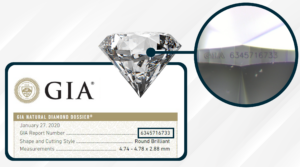
Introduction
Imagine holding a sparkling diamond in your hand, a gem formed billions of years ago deep within the Earth’s mantle. This captivating stone, admired for its beauty and rarity, represents more than just luxury—it is a linchpin in a global market worth billions. Yet, behind the allure of diamonds lies a complex economic landscape. Understanding the economics of the diamond industry involves delving into the factors influencing diamond prices, the pivotal role of major corporations like De Beers, and the impact of economic fluctuations on this glamorous sector.
The Global Diamond Market
The global diamond market operates through a combination of mining, trading, and retail. Diamonds are mined in several countries, including Russia, Botswana, Canada, and Australia. Once extracted, these rough diamonds are traded in major diamond hubs like Antwerp, Dubai, and Mumbai before being cut, polished, and sold as jewellery across the world.
Factors Influencing Diamond Prices
Several factors influence the price of diamonds, making the market highly dynamic and intricate:
- Supply and Demand: The basic economic principle of supply and demand plays a crucial role. Limited supply coupled with high demand typically drives up prices.
- Quality and Rarity: Diamonds are graded based on the four Cs—Carat, Cut, Colour, and Clarity. Higher quality and rarer diamonds command higher prices.
- Economic Stability: Economic conditions significantly impact consumer purchasing power. In times of economic prosperity, people are more likely to spend on luxury items, including diamonds.
- Currency Fluctuations: As diamonds are traded globally, currency fluctuations can affect prices. A stronger currency can make diamonds cheaper for consumers in that country, boosting demand.
- Marketing and Branding: Effective marketing campaigns and strong brand names can influence consumer perceptions and willingness to pay premium prices.
The Role of De Beers
De Beers, established in 1888, has been a dominant force in the diamond industry. For much of the 20th century, it controlled up to 90% of the world’s diamond supply, employing a strategy of stockpiling diamonds to control supply and stabilize prices. Although its market share has decreased due to competition and regulatory changes, De Beers still plays a significant role.
- Central Selling Organisation (CSO): De Beers historically used the CSO to manage diamond sales, ensuring a steady flow of diamonds to the market and preventing price volatility.
- Marketing Innovations: The iconic “A diamond is forever” campaign, launched in 1947, revolutionised the diamond market by associating diamonds with eternal love and commitment, driving up demand.
- Sustainability and Ethics: In recent years, De Beers has focused on sustainable and ethical practices, addressing concerns over conflict diamonds and promoting transparency in the supply chain.
Economic Fluctuations and the Diamond Industry
The diamond industry is not immune to economic fluctuations. Recessions, inflation, and shifts in consumer spending habits can all impact the market.
- Recessions: Economic downturns typically lead to reduced consumer spending on luxury goods. During the 2008 financial crisis, for example, the diamond market experienced a significant slump as demand plummeted.
- Inflation: Inflation can erode purchasing power, making diamonds less affordable. However, diamonds are also seen as a store of value, which can attract investors during inflationary periods.
- Consumer Trends: Changes in consumer preferences, such as the growing interest in sustainable and ethically sourced diamonds, can shift market dynamics. Lab-grown diamonds, for instance, are gaining popularity as a more affordable and environmentally friendly alternative.
Conclusion
The economics of the diamond industry are shaped by a myriad of factors, from market demand and quality to economic stability and corporate strategies. Companies like De Beers have historically played a central role in maintaining market stability, although their influence has waned with the rise of competition and regulatory changes. As the industry evolves, it continues to navigate the challenges and opportunities presented by economic fluctuations and changing consumer preferences. Understanding these dynamics is crucial for anyone looking to navigate the dazzling world of diamonds.



